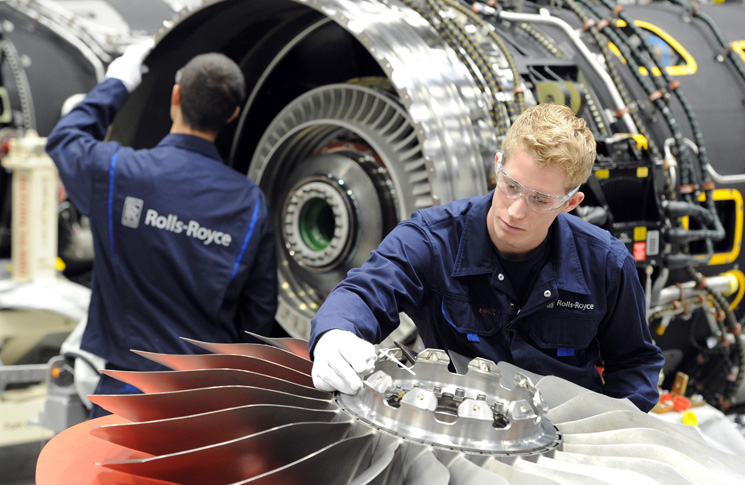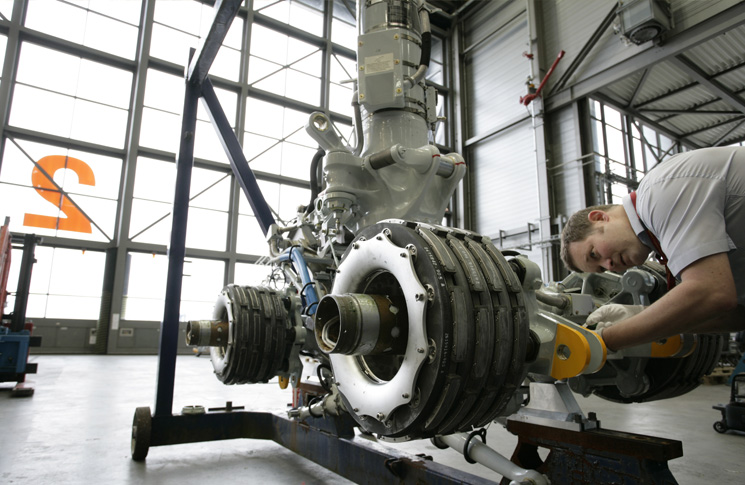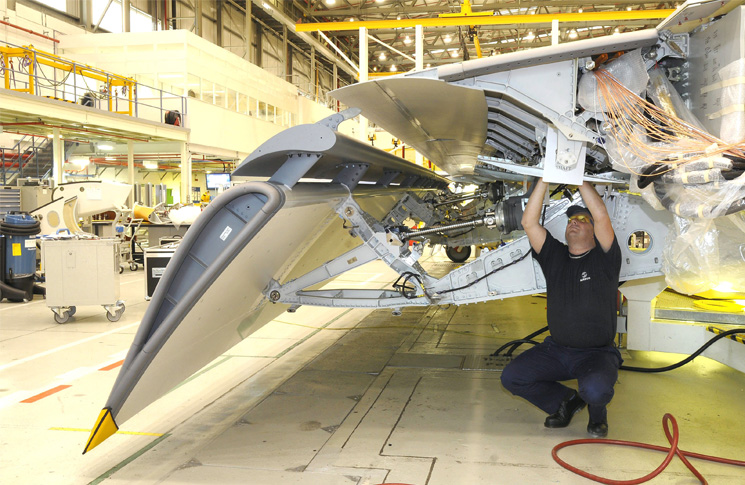What happens to aviation safety if there aren’t enough people to service aircraft? In the first of a series of articles, Flight Safety Australia looks at the looming shortage of aviation professionals.
Aviation is facing a quiet crisis. Its signs are subtle and slow and hidden to most. The crisis is the distinct possibility that in ten years there might be too few people left who can maintain aircraft to a safe standard. The problem is local, national and global.
In 2010 the International Civil Aviation Organization, (ICAO) estimated that operating the world’s airlines, charter operators and other aviation businesses would require an additional 350,000 pilots by 2026. Importantly, ICAO estimated that 480,000 more engineers would be needed to deal with the additional 25,000 air transport aircraft expected in service by then.
‘Simply stated, the demand for aviation professionals will exceed supply,’ ICAO said.
Factors contributing to the crisis include:
- wholesale retirements in the current generation of aviation professionals
- aviation professions not seen as attractive enough to potential candidates
- competition with other industry sectors for skilled employees
- training capacity insufficient to meet demand
- learning methodologies not responsive to new evolving learning style
- accessibility of affordable training
- lack of harmonisation of competencies in some aviation disciplines, and
- little awareness by the ‘next generation’ of the variety of aviation careers available.
The University of NSW Business School published a report on The Future of Aircraft Maintenance in Australia in October 2015.
Based on forecasts made by ICAO in 2010, the report found by 2025 there would be an estimated 30 per cent global workforce shortfall in aircraft maintenance capacity, with Australia and the Asia Pacific region particularly hard hit.
‘Australia has a both a strong need and excellent opportunity to help meet this shortfall in the region,’ the writers said. To meet the opportunity Australia would have to move ‘quickly to rebuild both our aircraft maintenance and maintenance training industries by 2020’.
The report noted a particular irony. As the labour shortage bites, the result may be boom times, in cash flow, at least, for the aircraft maintenance industry members who survive. ‘Shortages of skilled labour in these regions will necessarily affect both their capacity to take in work from countries like Australia, and the prices they will be able to charge in what will progressively become a seller’s market—as well as potentially the quality of that work. In the medium term, this is bound to mean a compression of the cost differential between performing maintenance in Australia and outsourcing it; eventually it could undermine much of the economic case for offshoring Australian work,’ the authors concluded.

However, ‘it could also force Australian airlines to offshore work to “second tier” maintenance and repair organisations (MRO) suppliers of dubious quality, if Australia lacked its own capacity.’
A lack of aircraft engineering expertise would be ‘a genuine threat to the safety of (Australian) domestic aviation,’ the authors said.
The task of rebuilding national expertise in aircraft maintenance is daunting. The report noted ‘There has been a recent severe decline in training activity and output relative to historical levels’. The number of (maintenance course) commencements over the whole of 2015 was at the lowest level so far this century.
The report’s research officer, Doug Fraser, said wastage rates among aircraft engineering trainees were running close to one in three, due to layoffs, dropouts and other causes.
Fraser said part of the looming problem with aircraft maintenance skills was the situation where ‘the next generation of engineers we train are going to deal with two distinct generations of technology, particularly if we become short on people. It’s going to be hard to specialise if there aren’t enough trained people to meet the overall need.’
‘You can’t assume that a newly qualified person is going to work on old general aviation aircraft for the rest of their career, but neither can you assume that they’ll only be working on composite airframes, highly intelligent avionics and systems monitoring.’
However, industry leaders point to money, or the lack of it, as a root cause of the shortage.
The business development manager of training provider, Aviation Australia, Paul Jones said, ‘from a money perspective it’s not very attractive, not when you can go to TAFE, become a sparkie (electrician) and earn $150, 000 a year.
The mining boom had stripped experienced, enterprising people from the industry, Jones said. ‘There were fully fledged, licensed engineers with multiple types on their licences going to the mines and getting paid an extra $250,000 a year.’
More recently, Jones said, overseas maintenance organisations, in the Middle East and Asia were taking their pick of young engineers, and were unconcerned by having to pay training bonds, as well as offering very lucrative salary packages.
General manager of Queensland Aerospace College, Melinda Murphy, said ‘Internationally, engineers can make more money working on amusement park rides than by being an aircraft engineer.’
Fraser says cost is also an issue in gaining qualifications. ‘It is getting very expensive. People are finding that to go from basic qualifications to licensing they’re facing a very large bill—even if they can find the training college to do it.’
Murphy says aviation as a whole needs to convey a sense of the spirit she has found over her 20 years in the industry.
‘We need to communicate how dynamic and exciting the aviation industry is. As part of that we need to be looking for gaps in the market such as UAV, to get people inspired and get them into training.’
The UNSW report recommended a National Aerospace/Aviation College should be established, with branches in each state and territory.
‘It would draw on the combined resources of the university and TAFE sectors, gain recognition as Part 147 category maintenance training organisation, a registered training organisation and a nationally registered higher education provider,’ the authors said.

Aircraft maintenance at a glance
14,489 Number of aircraft engineers in Australia (military and civilian) from 2011 census
5% Annual attrition rate assumed in ICAO study of engineering requirements
20,000 Estimated number of new qualified engineering personnel required in Australia by 2025
2,347 Number of people in engineering training courses in Australia in March 2011
1,294 Number of people in engineering training courses in Australia in December 2015



If CASA ” nanny state” impositions and subsequent cost to the industry especially GA and light sport were not in place perhaps many more aircraft would be flying and need to be maintained?
Lets see CASA introduced the new part 66 license in 2011, and then tried to stop the old system of gaining a licence by sitting CASA basic exams, ( a system which had worked well for a long time ). And now we are heading for a shortage of quality trained engineers and we only have half the people in training we had in 2011. Seems to me the new system isnt working. The new way is complicated and expensive and does nothing to improve the quality of engineers or safety. Lets see if they wake up and do something to help or just lower the standard again and give anyone a license.
I am an aircraft maintenance engineer and jobless I have an ICAO license with A320 type rating with both engines CFM56 and V2500, even I worked in general aviation field for 2 years, in globale i had 4 years of experience, but the problem is I am from Tunisia, my last company wasn’t able to pay us, so they didn’t renew our contract, now we are 20 Aircraft maintenance engineer without a job, when we want to work in other country, they aren’t interested, they are looking for more qualified engineer exemple A320, A330, A380, with at least 10 years of experience and other criteria like EASA OR FAA license or QAR66 that no one young as I am can had it, at least i need 5 years in a part 145 hangar , I can’t understand why I found such topic, around the world Technician and Aircraft engineer are fighting to find a job with a good conditions but the real problem is mentality and origins,
Umm, pretty much all the short falls in aviation maintence engineering are because of CASA. We adopted a European system however Europe does not even recognise CASA maintenance engineering licenses. CASA almost shut down the ‘basics’ system for licencing until they realised, at the last minute that that was not a good idea. This left some AMEs in limbo with some having already signed up to the expensive diploma route.
CASA re-classified many lower group helicopters into type rated machines, i.e. AS355. For an engineer to aquire his first type rating, particularly in regards to helicopters, after completing a very expensive 147 approved types course there are no OJT systems currently in place. At this point, CASA has left it up to the employer to implement OJT programs of who many companies will not do so. We have guys that can not obtain an AS355 type rating yet work on the machine every day
I find it incredible that they published this article. CASA has ruined engineering licensing by making it incredibly expensive for individuals and in some cases impossible at this point (helicopter OJT).
Good job CASA. Too many people directly out of Defence making decisions in that place. Everyone is too busy trying to be the next safety or quality guy, trying to reinvent SMS. How about concentrating on front line skills and trade knowledge.
Great Article… But as everyone know, these are only written for your evening coffee session, nothing has been done for the Industry… Converting a License or getting a license in any fields of Aviation, i.e Pilot, Maintenance is so expensive & difficult; So, Enjoy your Coffee…
Looks like we going to have a lot more Coffee. Wake up CASA were are You ????
And further to Linton(above) a good example is my experience. Got out of the military in 1985, and because my apprenticeship had been overseen and acredited by the then Sydney Technical College I was credited with all my basics, as well as a civilian Trade Cert, except Engine and Airframe electrical and AA. Which I thought was fair enough.
Within 12 months I had completed these as well as self manged CASA Engine and Airframe Type exams (held at the local aeroclub) for hydraulic and electric undercarraige, as well as the associated injected, turbocharged engines. Congrats- here’s your Grp 1&5 Airframe and your 1&3 Engines. The apprentices working for this Cairns based operation did much the same thing. And there were a few of them. Now we have a situation, as Linton points out, where this would be not economically or logistically feasible. I suspect if I was to be getting out of the Navy now, my only employment prospect would be CASA, a 147 organisation, a Safety Systems manager somewhere or, as some do if they have a pension, work for a civilian/military contractor in Brisbane working on the same helicopters, who “adjusts” your wage to account for your pension.
A project of the aeronautical vehicle industry
I want to establish an industrial project for advanced aviation vehicles